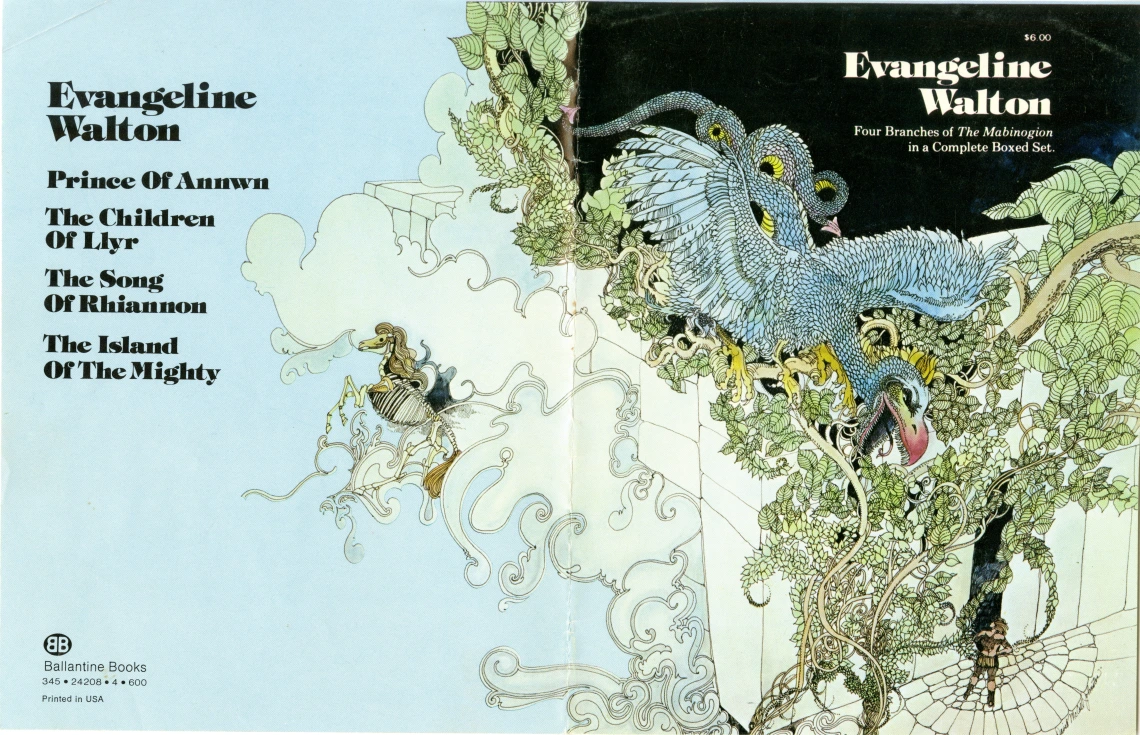Evangeline Ensley Walton papers

An intricately illustrated cover for one of Walton's published works.
Collection area: Literature
Collection dates: 1839 to 2025
The Evangeline Ensley Walton papers consist of biographical clippings, family documents, correspondence, manuscripts, publicity materials, some published materials, and Evangeline’s personal copies of books she considered to be influential. The family documents include materials from the Coyner, Furnas, and Ensley families. The correspondence contains personal and professional correspondence. Evangeline kept many letters that were sent to her, including a letter from fellow author Ursula K. Le Guin, which is located in Box 15 Folder 42.
Evangeline typed her manuscripts on onionskin paper as well as whatever scraps of paper she could find. Because she constantly rewrote pages, there are often multiple copies of similar pages. Debra Hammond, Evangeline’s literary heir, was able to get some of Evangeline’s manuscripts published posthumously.
Some works that Evangeline considered to be influential are included in this collection, several of which carry inscriptions to and from her family members. Also included in this collection are non-English copies of some of her works. Other assorted books by Evangeline Walton have been cataloged as part of Special Collections' general book collection.
Evangeline Wilna Ensley, better known by her penname Evangeline Walton, was born in Indianapolis, Indiana on November 24, 1907. Based on the Welsh book of legends, the first volume of her Mabinogion tetralogy, The Virgin and the Swine, was published in 1936. It was re-published in 1970 as The Island of the Mighty, followed by The Children of Llyr in 1971, The Song of Rhiannon in 1972, and The Prince of Annwn in 1974. Other novels include 1945’s Witch House, 1956’s The Cross and the Sword, 1983’s The Sword is Forged, and the posthumously published She Walks in Darkness.
Suffering from ill health as a child, Evangeline was treated with silver nitrate tincture which gave her skin a blue-gray tint which darkened as she aged. Raised by her mother and maternal grandmother after her parents divorced in 1924, she often mentioned her family’s Quaker faith as an important inspiration for the distinctly feminist angle of many of her stories. Evangeline moved to Tucson in 1946 after her grandmother passed away, where she lived until her death in 1996.
A collection guide explains what's in a collection. New to using our collections? Learn how to use a collection guide.
Collection guideAccess this collection
Visit us in person to access materials from this collection. Our materials are one-of-a-kind and require special care, so they can’t be checked out or taken home.
How to cite
Learn how to cite and use materials from Special Collections in your research.
